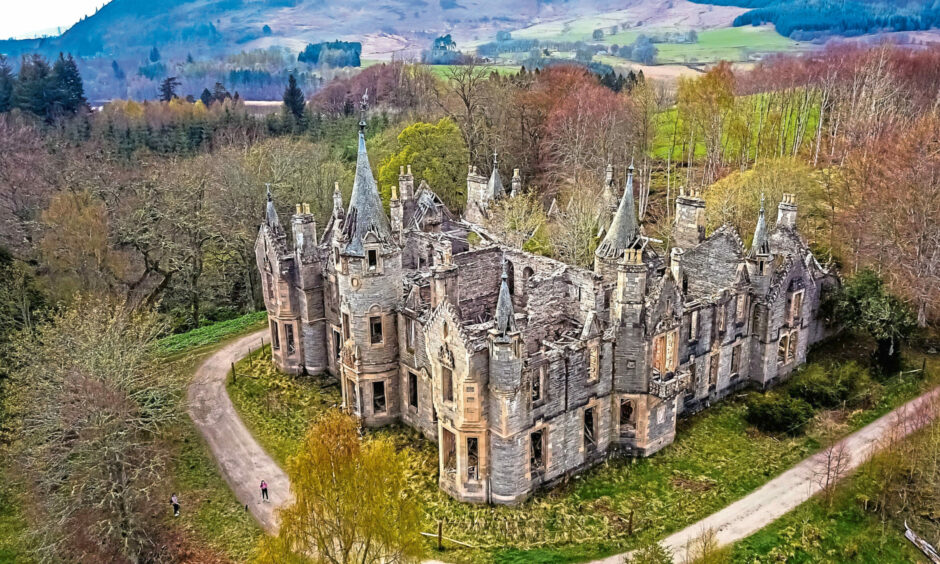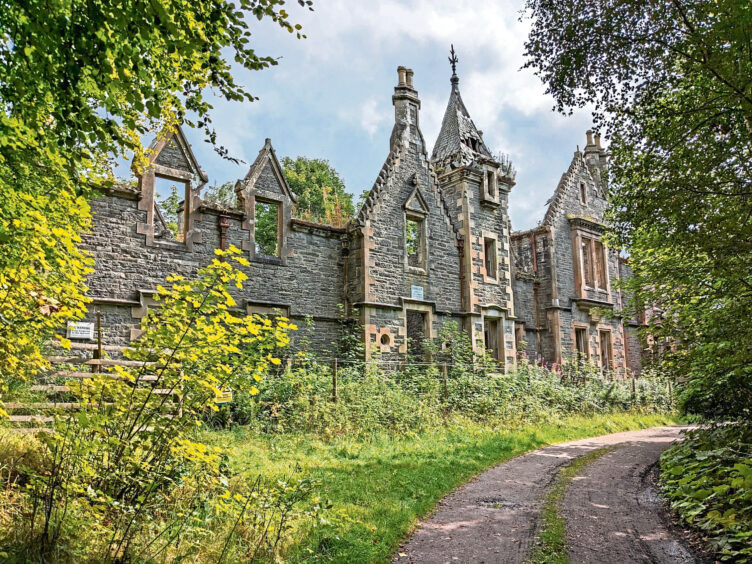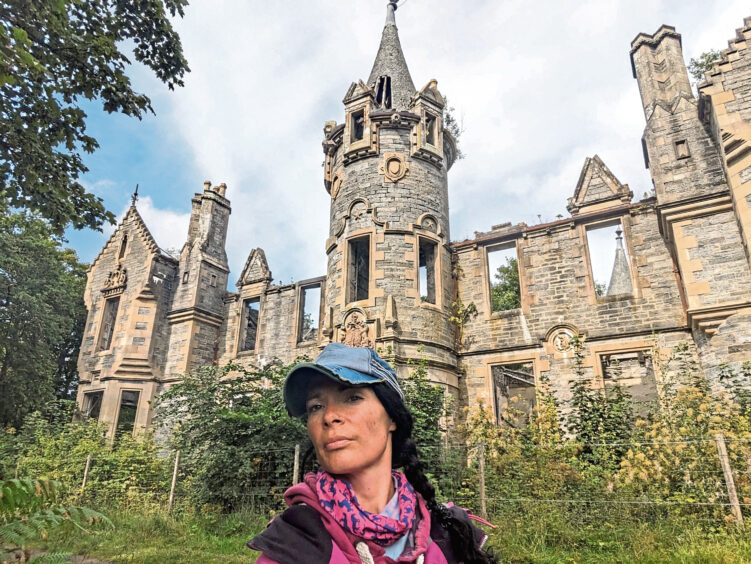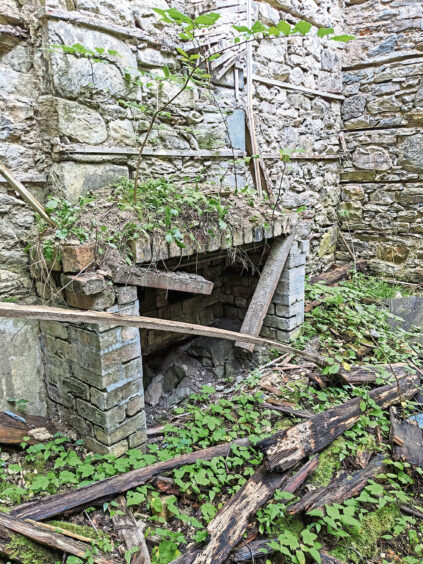
My heart is racing as I march through the woods on a mission to find the fairy tale ruins of Dunalastair House.
I’ve read so much about the abandoned mansion that I can’t wait to discover it.
As I turn the corner, it rears up before me, almost menacingly. It’s an imposing, mesmerising and haunting vision.
Once a stately country house, and at one time owned by Hugh Tennent, the head of brewing company Tennent’s, it’s now a decaying, skeletal wreck.
Despite being derelict and roofless, it’s still hugely impressive, retaining many original features – conical roofs, turrets, chimneys and a coat of arms above the main door.
So what’s the story behind its decline?
Built in 1859, when General Sir John Macdonald – who commanded the land forces in Scotland – owned Dunalastair estate, the two-storey Baronial mansion was erected on the site of two previous grand houses.
It was designed by Andrew Heiton, the Perthshire architect who also worked on the Atholl Palace Hotel, Fonab Castle in Pitlochry, and both Perth and Dunkeld railway stations.
Sold to founder of Tennent’s
Around 1881, the estate was sold by Alastair Macdonald, son of Sir John, to Hugh Tennent, the great-great-grandson of the founder of Wellpark Brewery – now known as Tennent’s Brewery.
Sadly, he only owned it for nine years until he died aged 27.
Caledonian Railway Company
A year later, the house and estate were sold to the chairman of the Caledonian Railway Company, James Clark Bunten – he’s the great-grandfather of the current owner.
However, with the onset of the First World War, fewer staff were available to run the big house, four miles from Kinloch Rannoch.
School for Polish refugees
It was requisitioned as a school for the children of Polish refugees during the Second World War.
A fire broke out in the 1940s, resulting in the loss of a painting by revered artist John Everett Millias.
It was last occupied in 1952. The house’s contents were sold off in the mid-1950s, with a notice in The Courier on June 5, 1954, informing readers of the auction of “useful household furniture and furnishings”.
It makes for fascinating reading, with the following items included for sale: “Handsomely carved oak and painted mantelpieces with old brass-mounted hob and other grates; dog grate with Sussex back plate; hand weaving table loom; old military full dress and other uniforms of the 15th Hussars with drum horse saddle cloth and leopard skin; Victorian court dresses, travelling trunks…”, and much more.
Target for vandals
Throughout the ’60s, it became a target for vandals. After lead was stolen from the roof, the property was left to rot.
There have been many proposals to restore the majestic building, but due to astronomical costs of doing so, nothing has happened.
Getting in is not permitted – signs warning any would-be explorers of the dangers, and telling people to keep out, are prolific.
The fact there’s a deer fence encircling the entire structure – with barbed wire coiled all over it – is another fairly effective deterrent.
A peek at photographs of the interior – and a walk round the perimeter – shows rotten timbers hanging on by a thread and masonry ready to crash down.
Venture inside and you could be seriously injured – or killed.
Previous explorers – maybe they wore hard hats – took pictures of the wine cellar, doors appearing to be in decent nick, a rotting wooden spiral staircase leading up to one of the turrets, ornate iron fireplaces, and vegetation sprouting through walls and windows.
Nature is most definitely trying to reclaim the site, and it’s a place where bracken, nettles and even trees thrive.
After I’ve gaped in wonder, I retrace my steps to my car, my head full of dreams about winning the lottery, buying Dunalastair, and transforming it into my very own castle.
As I stroll, I notice a signpost pointing to the “Chiefs’ Burial Place”. This takes me through woodland to a stunning, peaceful little graveyard overlooking Dunalastair Loch.
It’s the resting spot for several Clan Donnachaidh chiefs. I pause for a while to pay my respects and drink in the views.
Then it’s a case of working out the history! It’s rather complex – essentially, Dunalastair Estate originally belonged to the Robertson family but the clan name is Donnachaidh.
Clan control
The clan, who lived in and around the area, retained control of the estate until 1853, when it was sold by George Duncan Robertson, 18th Chief of Clan Donnachaidh, to General Sir John Macdonald of Dalchosnie.
Macdonald knocked down the house that stood on the site at the time, and built his own – the remains of which stand today.
- The great poet chieftain, Alexander Robertson of Struan, a staunch Jacobite, lived in a house called the Hermitage thought to have been on the site of or near the current ruined Dunalastair House. It was destroyed by fire after the 1745 Jacobite uprising.
- A second mansion – Mount Alexander – was built on the site in 1801. The Macdonald Clan crest and motto Per Mare, Per Terras (by sea and land) can still be seen above the main entrance.
















Conversation